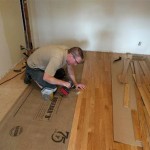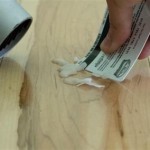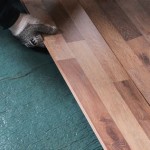What to Use to Remove Paint From Wood Floors
Removing paint from wood floors can be a challenging task, particularly if the paint has been present for an extended period or if multiple layers exist. The choice of method depends on various factors, including the type of paint, the type of wood, the age of the flooring, and the desired outcome. This article will outline several approaches and the specific products and tools required for safely and effectively removing paint from wood floors.
Prior to commencing any paint removal process, it is crucial to identify the type of paint involved. Common types include latex, oil-based, and alkyd paints, each requiring a different approach for optimal removal. Latex paints are generally water-based and easier to remove, while oil-based and alkyd paints require stronger solvents. Identification can often be achieved by examining the paint’s container label, if available. If the original label is missing, a test area can be treated with denatured alcohol. If the paint dissolves, it's likely a latex paint. Oil-based paints will typically resist this solvent.
Safety precautions are paramount during paint removal. Adequate ventilation of the work area is essential to prevent the inhalation of fumes, especially when using chemical strippers. Protective gear, including gloves, safety glasses, and a respirator mask, should be worn at all times to avoid skin and eye irritation and respiratory problems. Additionally, it is advisable to cover nearby furniture and surfaces with drop cloths to protect them from paint splatters and chemical spills. Proper disposal of waste materials, such as used paint scrapers and solvent-soaked rags, is also crucial. Refer to local regulations for appropriate disposal methods.
Key Point 1: Chemical Strippers
Chemical paint strippers are a common and often effective method for removing paint from wood floors, particularly for stubborn, multi-layered coatings. These strippers work by penetrating the paint layers and weakening the bond between the paint and the wood surface. Several types of chemical strippers are available, each with varying levels of strength and toxicity. It is important to select a stripper that is appropriate for both the type of paint being removed and the type of wood flooring.
Solvent-based strippers are generally more powerful than water-based strippers and are better suited for removing oil-based and alkyd paints. However, solvent-based strippers typically contain volatile organic compounds (VOCs) that can be harmful to human health and the environment. Water-based strippers are generally less toxic and have lower VOC content, making them a more environmentally friendly option. However, they may require multiple applications to effectively remove stubborn paint layers.
When using a chemical stripper, it is crucial to follow the manufacturer’s instructions carefully. Typically, the stripper is applied to the painted surface in a thick layer using a brush or roller. The stripper is then allowed to dwell for the recommended amount of time, which can range from a few minutes to several hours, depending on the product and the thickness of the paint. After the dwell time, the softened paint is scraped away using a plastic scraper or putty knife. Avoid using metal scrapers, as they can damage the wood surface.
Once the majority of the paint has been removed, the floor should be thoroughly cleaned to remove any remaining stripper residue. This can be done using a neutral cleaner and water, followed by a thorough rinsing. Allow the floor to dry completely before applying any new finish.
An important aspect of using chemical strippers is considering the type of wood. Softwood floors, such as pine, are more susceptible to damage from harsh chemicals compared to hardwood floors like oak or maple. Always test the stripper in an inconspicuous area first to assess its compatibility with the wood and to ensure it does not cause discoloration or damage.
Key Point 2: Heat Guns and Heat Plates
Heat guns and heat plates provide an alternative method for removing paint from wood floors without the use of harsh chemicals. These tools use heat to soften the paint, making it easier to scrape away. Heat guns resemble hair dryers and blow hot air onto the surface, while heat plates are flat, heated surfaces that are placed directly on the paint.
When using a heat gun, it is important to keep the gun moving constantly and to avoid focusing the heat on one spot for too long. Prolonged exposure to high heat can scorch the wood surface or cause the paint to release harmful fumes. Hold the heat gun several inches away from the floor and use a plastic scraper to remove the softened paint as it begins to bubble or blister. It is often helpful to work in small sections to prevent the paint from cooling and hardening before it can be removed.
Heat plates offer a more controlled method of applying heat. The plate is placed directly on the painted surface, and the heat softens the paint underneath. This method is particularly useful for removing paint from large, flat areas. Once the paint is softened, it can be scraped away using a plastic scraper. Heat plates are often preferred over heat guns for delicate or intricate flooring details, as they provide more even heat distribution and reduce the risk of scorching the wood.
Ventilation is still important when using heat guns or heat plates, as some paints can release harmful fumes when heated. Wear a respirator mask and ensure the work area is well-ventilated. As with chemical strippers, testing the heat gun or heat plate in an inconspicuous area is recommended to assess its impact on the wood flooring.
Both heat guns and heat plates are best suited for removing multiple layers of paint. However, it is crucial to exercise caution to avoid overheating the wood and potentially causing damage. Practice with the tools on a less visible area of the floor before tackling the entire project.
Key Point 3: Sanding
Sanding is a mechanical method for removing paint from wood floors that involves using abrasive materials to grind away the paint layers. This method is typically used as a final step after other paint removal techniques, such as chemical stripping or heat application, have been employed to remove the bulk of the paint. Sanding can also be used as the primary method for removing paint, particularly if the paint layer is thin or if the floor is being refinished entirely.
Several types of sanders can be used for paint removal, including drum sanders, orbital sanders, and edge sanders. Drum sanders are powerful machines that can quickly remove paint and level uneven surfaces. However, they require skill and caution to operate, as they can easily damage the wood if not used properly. Orbital sanders are less aggressive and provide a smoother finish, making them suitable for removing thinner layers of paint and for preparing the floor for refinishing. Edge sanders are used to sand along the edges of the room and in hard-to-reach areas.
When sanding paint from wood floors, it is important to start with a coarse grit sandpaper to remove the bulk of the paint and then gradually progress to finer grits to smooth the surface. A typical sanding sequence might involve starting with 36-grit sandpaper, followed by 60-grit, 80-grit, and finally 100-grit or 120-grit sandpaper. The choice of grit depends on the thickness of the paint and the desired smoothness of the final finish. It is crucial to use a vacuum cleaner to remove dust between each sanding pass.
Sanding can generate a significant amount of dust, which can be harmful to human health. Always wear a respirator mask and eye protection when sanding, and ensure the work area is well-ventilated. Consider using a sander with a dust collection system to minimize dust exposure. It is also essential to properly dispose of the sanding dust, as it may contain lead or other hazardous materials, especially if the paint is old.
After sanding, thoroughly clean the floor to remove all remaining dust particles. This can be done using a vacuum cleaner and a damp cloth. Allow the floor to dry completely before applying any new finish. Staining and sealing the floor as soon as possible after sanding will protect the bare wood from moisture and damage.
Regardless of the selected method, preparation and patience are key to successfully removing paint from wood floors. Testing the chosen technique in an inconspicuous area, prioritizing safety, and carefully following manufacturer’s instructions will minimize the risk of damage to the flooring and ensure a satisfactory outcome.

Don S Room Progress How To Remove Paint From Wood Floors At Home With Ashley

How To Remove Paint Off Hardwood Floors Safely

How To Remove Old Paint From A Wooden Floor Esb Flooring

Easily Remove Paint From Your Floors

Easiest Ways To Clean Paint Stains From Your Hardwood Floors

Don S Room Progress How To Remove Paint From Wood Floors At Home With Ashley

How To Remove Paint From Hard Wood Floors

Removing Paint From Wood Flooring And Beyond Blog

Does Wd 40 Remove Paint From Hardwood Floors Mr Sander

Life On Elizabeth How To Remove Paint Splatter From Wood Floors
See Also







